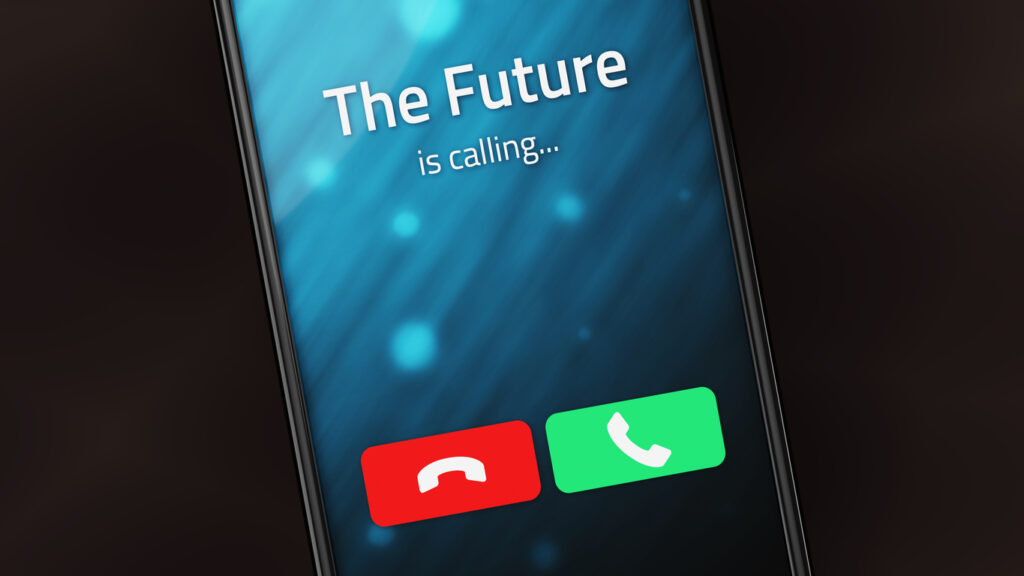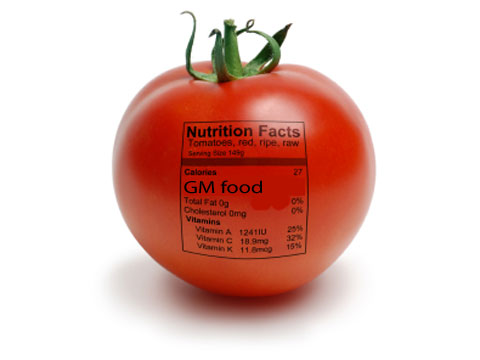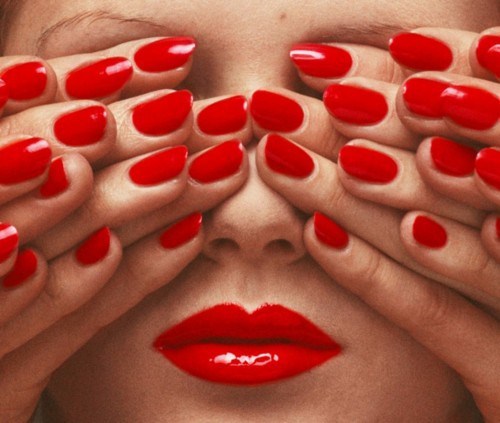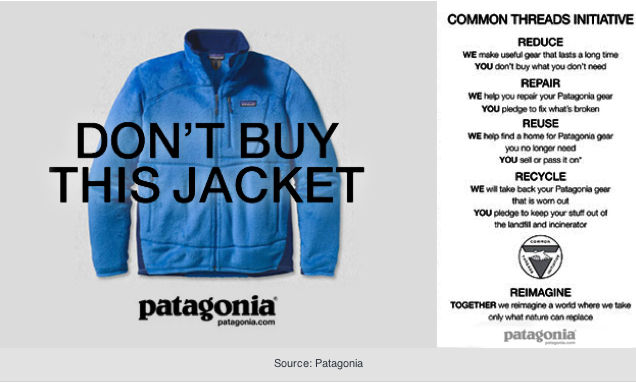
Big Brand Experience + Female Led
Experience counts. Why not let those with Fortune 500 marketing and advertising prowess help build your sustainable, socially responsible brand? We are female-led and we work with female talent. Women make up 85% of all purchasing decisions in America. Isn’t it time you hired a company that knows how to speak to your biggest audience?
For samples of our big brand work and most current projects visit www.dombrowcreative.com
I consider my immediate family fortunate to be healthy and able to shelter in place together in our Bronx apartment with our mini poodle. We overlook the Broadway Bridge and the Harlem River Ship Canal, blessed with great light, a cross breeze, and a Hopper-esque industrial view complete with trains, planes, boats, bridges, and trees.
Directly across the water, we overlook New York-Presbyterian Allen Hospital. Pre-COVID, it was just a nice view. Since COVID it has taken on a different veneer. At 7 pm the cacophony of pots and pans clank from rooftops and casement windows to cheer on the frontline warriors battling the unseen enemy across the water inside the hospital that was once just a building. Now it is a place of worship that commands reverence. The number of ambulances constantly crossing the bridge with their wailing sirens that cut through the day and night are finally and thankfully waning. This is a time of broken hearts and mending society. This is a time of deep learning.
One of the things this pandemic has taught me is how easy it is to live with less. I’ve learned to save in places I hadn’t considered before. What do I need to do my job? Reliable internet, a computer, a desk, my brain, my experience, passion, talent, curiosity, drive, fingers (one benefit of being a writer), and creative partners (which I have in abundance just one Zoom call away).
Frankly, anything I’m spending money on today is pre-COVID costs like web hosting, domain names, subscription fees, high-speed internet, etc. I’m considering each one of these expenses under a new lens of what’s essential from now on. What do I need for the future of my business? What do I need to serve my clients best? What do I need to serve life itself through my business?
Like many Americans, I am currently unemployed. Two projects scheduled for March evaporated. All my clients have gone quiet.
My life partner and I are raising our 10-year-old adopted daughter. She attends an independent school in NYC, now on-line. New York City is on shut-down through June 13, as of now. Summer camps are closed. The future of business and life is uncertain. But the reality is, it has always been uncertain. As much control as we might have imagined we had over any of it, this pandemic has crushed. The only thing we can control is who we are being in the face of uncertainty.
I’m a business owner of a branding collective dedicated to helping build companies and organizations with a higher purpose, including sustaining life on earth. I also am a gig worker, a freelance creative director, who, until now, has been hired off and on for decades by big ad agencies and digital firms to do creative campaigns for their clients. COVID-19 has given me pause during the Great Pause to consider the future in a new way for myself, my family, and my business.
It’s given me pause to donate time to a non-profit dedicated to helping the world’s most vulnerable children. It’s given me pause to help a friend launch his business. It’s given me pause to form an exciting new creative alliance. It’s given me pause to reflect, meditate, and ponder my soul’s desire. It’s given me pause to connect with colleagues, friends, and family who matter most. It’s given me pause to think about want vs. need, in business and life. What do consumers need vs. what do companies want them to believe? What does humanity need? In any case, Truth has never been more paramount.
COVID-19 has taken the lives of at least 60,299 Americans so far to date, per the CDC. It’s ravaged the livelihoods of over 36 million and countless more who haven’t been able to make unemployment claims. It’s shuttered retail icons like J. Crew, JC Penny, and Neiman Marcus and snuffed out countless small businesses nationwide. It’s stolen the graduation ceremonies of millions of students. It’s canceled national and local sporting events. It’s halted international and national travel, weddings, reunions, and celebrations of all kinds. It’s altered the trajectory of learning for all children. It’s taught our children to fear touch, closeness, and the air itself.
COVID-19 has simultaneously brought humanity to its knees. It’s forced us to focus on what’s most important. It’s forced us to rethink our needs and to prioritize our health. It’s forced us to understand with every cell of our being how connected we all are, in sickness and in health. It’s forced us to grasp how one action or inaction can mean the difference between life and death for thousands. It’s inspired us to look in on our elderly or single neighbors and authentically thank our delivery men, mail women, and grocery clerks. COVID-19 has laid bare how racial and socioeconomic inequality has made some more vulnerable to succumb to COVID-19 than others. This virus has rubbed our collective face in the ugly truth that humanity’s unchecked and continued encroachment on the turf of wildlife has resulted in the most significant collective loss of human life in a century. All while we sit and watch the incredulous folly of elected officials ramp up the most dangerous misinformation campaign in history.
So what will we learn? What will we take into our new future? What will we leave behind? Will we live with less of what doesn’t work and more of what does? Will we feel richer buying less? Will we sit idly by less often and speak truth to power every opportunity we get. Will we make ourselves less busy and more accessible to one another? Will we complain less and vote more? Will we check in more on others and check out less on our phones? Will we live with less plastic surrounded by more beauty? Will we spend less on our hair and save more for a rainy pandemic? Will we teach our children to live with less? Less screen time and more conversation? Less stuff and more play? Less tv and more books? Will we keep more physical distance and less spiritual distance? Will we live with less fear and distrust and allow this epic of all human tragedies to teach us to love and cherish more?
On Friday, March 8, Whole Foods Market became the first retailer in the US to require labeling of all genetically modified foods.
They are no longer just about being a destination where consumers can purchase a wide variety of WHOLE foods but they are about ensuring consumers have access to the WHOLE story about what’s in the foods they buy.
I project this will go down in history as one of the most successful and important brand initiatives of 2013, and perhaps of this century. Whole Food’s choice to zig against the zag of its very own industry, putting an internal policy in place to help protect consumers, will not only cement the trust and loyalty of its customer base but will win over a lion’s share of new customers hungry to stand alongside them in this fight for consumer protection and public health (even if they have to pay more to do so). This will inevitably cause a ripple effect that will impact all grocers and the entire food industry, and will surely trickle up to Washington policymakers. And we’ll get to watch this delicious scene play out over these next few years as Whole Foods puts its stand in force.
Whole Foods has given food companies 5 years to get their act together, or to be evicted from their hard-won shelf space. Even in the face of consumer criticism about one of their own private label products. Whole Food’s 365 cereal came under scrutiny as it contained genetically modified corn (as do most cereals). But before the press had a field day with this, they quickly re-formulated this cereal to remove the GMO corn. Ok, so no company is perfect. But how quickly the consumer is willing to forgive and forget when they see a company that has the big picture in mind. Big Food, Big Pharma, and not even Big Government will be able to hold on to their justification much longer that it’s ok to feed Americans genetically modified ingredients without them knowing about it.
88% of corn and 94% of soy crops were genetically modified in the US in 2011. Soy and soy derivatives are in most bread, crackers, chips, cookies, candy, canned tuna fish, processed sauces, salad dressings, condiments, and this is only the tip of the soyberg. Many restaurants use soybean oil to cook with because it’s inexpensive. Soy lecithin is used in many vitamins and supplements, and it’s even in most chocolate. Holy Godiva! If you look on the back of many Trader Joe labels (and labels across the board), you’ll often see a note that says “Made in a facility that processes Soy, etc.”. So there’s almost no escape from soy. Or the negative health effects soy produces on human physiology, apart from the genetically modified variety. Of course, we all know how pervasive high fructose corn syrup is in our food and beverage supply, especially with all the negative press it’s gotten in recent years that it’s one of the leading contributors to diabetes and obesity in America. Thanks for your help on this one Mayor Bloomberg and others who have waged effective campaigns to get the word out on this issue. But have we yet grappled with the concept that nearly all this corn syrup is coming from GMO corn?
No wonder PepsiCo and Coca-Cola spent millions last year lobbying against the hard-fought GMO food labeling ballot in California. What’s scarier is that they won (with the financial help of the biotech industry). They actually succeeded at convincing voters that mandatory labeling of GMO foods would spread unfounded fear among Americans, would raise food prices, and would have a negative impact on farmers. To help seal the deal on this argument and put this ballot to rest (at least until now), our own Food and Drug Administration, the World Health Organization, and the American Medical Association piped in and told Americans that genetically modified foods aren’t proven to have a negative effect, when in fact there is plenty of evidence that points to the opposite perhaps being true. But the real truth is, the amount of research done in the area of GMO food testing on human beings (or even lab rats) is insufficient to make an argument for GMO labeling stick in the face of multimillion-dollar smear campaigns conducted by giant corporations. So even though we don’t have the research or the voters or the policies to force change at this time, we’ve now got a rebel game-changer in Whole Foods.
So kudos Whole Foods for living up to your brand name in a WHOLE new and powerful way that makes a difference for the WHOLE of America.
Source for photo:
Confessions of a Beauty Junkie.
I am an addict. I suffer from the same disease most Americans suffer from. Reckless Consumerism. Like many of you, I work hard to make more money to buy more things, some of which I don’t need. I also have spent a good portion of my career helping clients sell products to consumers, some of which they didn’t need.
I have acquired a name over the years in NYC as a copywriter and creative director who can spin desire for all things beauty-related and engage women’s emotions – a niche I found myself in after doing a few successful ad campaigns for large beauty brands. I know how to wrap up a claim in a nice package inside of a big idea, so it moves products off shelves. I am skillful at skirting legal issues with a well-crafted story when it comes to efficacy or health risks associated with “product benefits”. I can get a woman’s attention with beautiful imagery and close the deal in five words or less. I’ve hired top fashion photographers and directors to photograph and film models with flawless skin and hair to sell women products full of neurotoxins. Some of these products were tested on animals. I’ve worked with post-production houses to retouch models’ flawless visage to make them more flawless. Yes, I’ve done it all in the name of “Beauty”.
This is my Ugly Truth. I have been part of an industry and a culture of consumers, sometimes unaware and oftentimes intentionally turning a blind eye to what we are putting in and on our bodies and on what we are perpetuating in society by making unconscious products, purchases, and messages – a broken system called Capitalism. One that is consuming our natural resources faster than the earth can replenish them. One that is robbing us of our health. And our innate Beauty.
But in the end, try as I may to right my path, I am not 100%. And far from it. While I fight the urge to shop for things I don’t need on most days, I can, in an off moment, be sucked into a Sephora by the shiny, glimmering displays and a fabulous makeup artist who catches my eye, brandishing the latest shiny eyelash wand and dropping the casual offer for a quick “touch up”. Cut to me with a total makeover minus $327.00, walking out of the store, feeling pretty on the outside, and ignoring that hankering on the inside – the one caused by knowing too much and that inevitable crash of a junkie.
Then there’s that tiny black bag – the contents of which seem to burn a hole in it until I get home and feverishly unpack it. I replace all the dusty, fingerprinted, partially unused items in my makeup bag with all the shiny, new powders, creams, shellacs, lengtheners, thickeners, plumpers, bronzers, outliners, highlighters, brighteners, primers, none of which I will finish, and all of which I sample immediately. I find clever ways to justify my purchases to myself. One of my favorites is “It’s research I need to do for my business”. While this has a grain of truth to it, most of the time I’m either just bored, curious or I need a quick fix of retail therapy because I’m having a bad week.
While I have a fairly keen internal toxicity radar which scans every label it can find for harmful chemicals, ingredients, and toxins like dioxane, diethyl phthalate, formaldehyde, alcohol, parabens, heavy metals, dyes, etc., I still throw caution to the wind at times, especially when it comes to cosmetics. Let’s face it, it’s nearly impossible to know what’s in most makeup or what can be considered “clean” or “organic” because the cosmetic industry is pretty much self-regulated. If you’re wise and interested, you can investigate products on the Environmental Working Group’s “Skin Deep Cosmetic Database“, but boy does that take all the fun out of shopping when you find out the next new miracle cream is laced with toxic matter.
According to an article in Smart Money, Americans spent $33.9 billion on cosmetics alone in 2010. Things haven’t changed much since then. As well, the cosmetic industry has no problem spending a fraction of that every year lobbying to squelch bills like the Safe Cosmetics and Personal Care Products Act so they don’t get passed. Why do you think the European Union has banned 1200 chemicals from use in their beauty products, and the US has only banned 10? Sound familiar? Look at Europe’s gun safety laws compared to ours. Washington is being bought on every level, from bullets to beauty. And all of it is killing us – whether it’s an instant taking of human life or a more drawn-out death by small dosages of poison daily.
Lipstick Wearers, here’s a helpful tidbit. 400 lipsticks tested positive for lead, according to the Campaign for Safe Cosmetics. But unless you personally take your lipstick to a lab and have it tested, there’s no way to find out if you’re putting lead on your lips, and therefore into your body. Lead is a cheap way to make colors like bright red pop. It’s also a cheap way to give yourself a wide range of health issues.
I try to buy cosmetics from small companies that I’ve read up on that are for the most part mineral and/or plant-based, but I can sacrifice my standards when I must have things like the bright purple Chanel mascara. That said, I’m more discerning than most shoppers because I’m neurotic and constantly devour anti-establishment health articles, which keeps me in relative check. And yet, I STILL have an addiction to trying new things and a lack of patience when it comes to finishing my old things.
So what’s a junkie to do? Faced with this paradox of the beast within, and the business and lifestyle I’m out to promote, I hereby declare myself on an official BEAUTY FAST. As part of this fast, I’ll be using every beauty and personal care item in my cabinet before I buy another to replace it. Could be a couple of years before I go through it all, but that’s my commitment. The only caveat, if I discover one of these products contains ingredients I can’t abide by, I’ll find a way to properly dispose of the toxic waste rather than use it. Funny, there’s a guide for disposing of CFL lightbulbs and mercury thermometers, but no guide for disposing of carcinogenic makeup.
Stay tuned for future blog postings in this new series entitled: Confessions of a Beauty Junkie.
And please do share.
Photo sourced from: http://thestylepundit.wordpress.com/
What if there were more brave and visionary titans of transformation as inspired as Ray Anderson, Founder of Interface Carpet, who unfortunately passed in 2011, and Yvon Chouinard, Founder of Patagonia?
If even 5% of CEOs of the Fortune 500 top companies followed in their footsteps, it may just cause a tidal wave of goodwill for our environment and society that has us reach the tipping point that so desperately needs to happen to sustain life on earth. The window is closing fast. Who will be our next Hero?
Both of these men felt a moral imperative to make their respective businesses work in ways that were most compatible with our natural environment, society, and their employees. Both men were inspired to meet all the challenges of a whole and complete company transformation from the inside out. Both men totally re-scaled and re-invented their companies, including the sourcing and production of their products, their manufacturing, their supply chain, the types of products they offered, their corporate culture, the delivery of their goods to the consumer, and the communications strategy behind their consumer-facing ad campaigns. Now that’s TRUE branding from the inside out. Both of these men have testified that while the choice to change everything took some risk, experimentation and investment in the short term, that it paid off in spades financially for their companies over the long term.
While Ray Anderson is no longer physically with us, he left behind a legacy and a company known as mavericks of sustainable business. In his 2009 book, “Confessions of a Radical Industrialist: Profits, People, Purpose–Doing Business by Respecting the Earth“, he says since 1994 Interface has:
• Cut greenhouse gas emissions by 82 percent
• Cut fossil fuel consumption by 60 percent
• Cut waste by 66 percent
• Cut water use by 75 percent
• Invented and patented new machines, materials, and manufacturing processes
• Increased sales by 66 percent, doubled earnings and raised profit margins
Yvon Chouinard fortunately is still at the top of his game and keeps on pushing the envelope in the business world using Patagonia as the vehicle for positive change. His branding takes an anti-consumerism and anti-fashion approach and embodies his philosophy. It’s not about buying more, it’s about buying smarter. So that’s what he tells consumers in the ad featured above: “Don’t buy this jacket.” If you really need to buy outdoor wear then gosh darn it, Patagonia will make sure it multitasks and is made to last. And if it breaks, we’ll fix it. And btw. we’ll recycle your used Patagonia jackets. (The fleece in it was made of recycled plastic bottles to start with.)
Patagonia has seen 25% growth annually throughout the recession, and one of Yvon’s struggles has been to keep scaling back and staying small enough to be able to control the output and environmental impact of his business. But as he imparted in a recent interview at a greenbiz.com forum, he can take this kind of risk. It’s his company. He doesn’t have to answer to stakeholders who are pushing for growth at the expense of our planet’s natural resources and the well-being of life on earth. Yvon only has to answer to his own conscience.
If you are a visionary entrepreneur and/or CEO and you have a moment between meetings and tweets to check out these men and what inspired them, including reading Paul Hawken’s book, “The Ecology of Commerce: A Declaration of Sustainability“, which Ray Anderson sites as his inspiration (and which I also read and which inspired me to start my company) please check out these links below and spend a few minutes to experience firsthand what conviction combined with courage can create.






